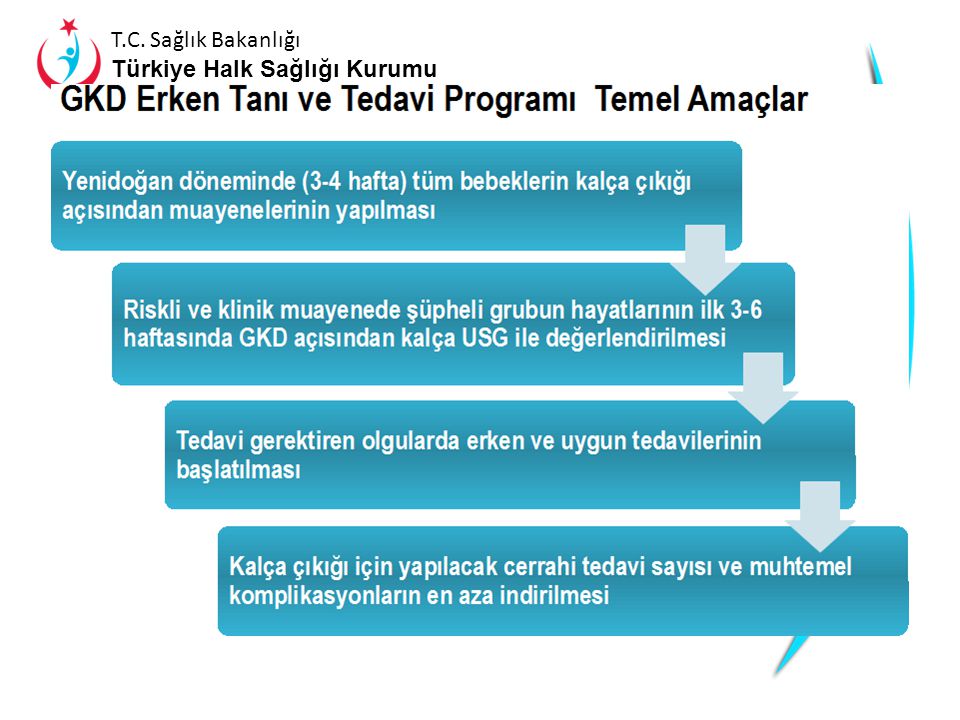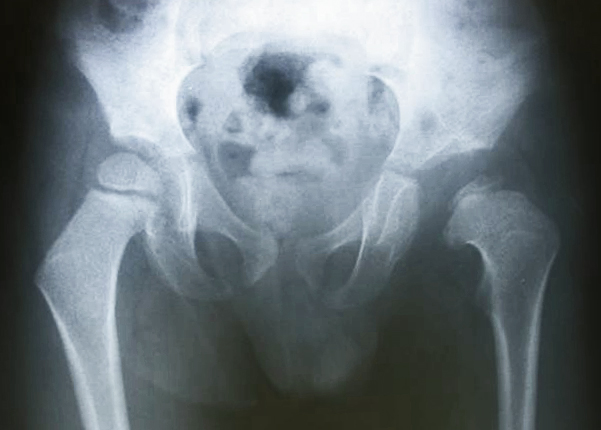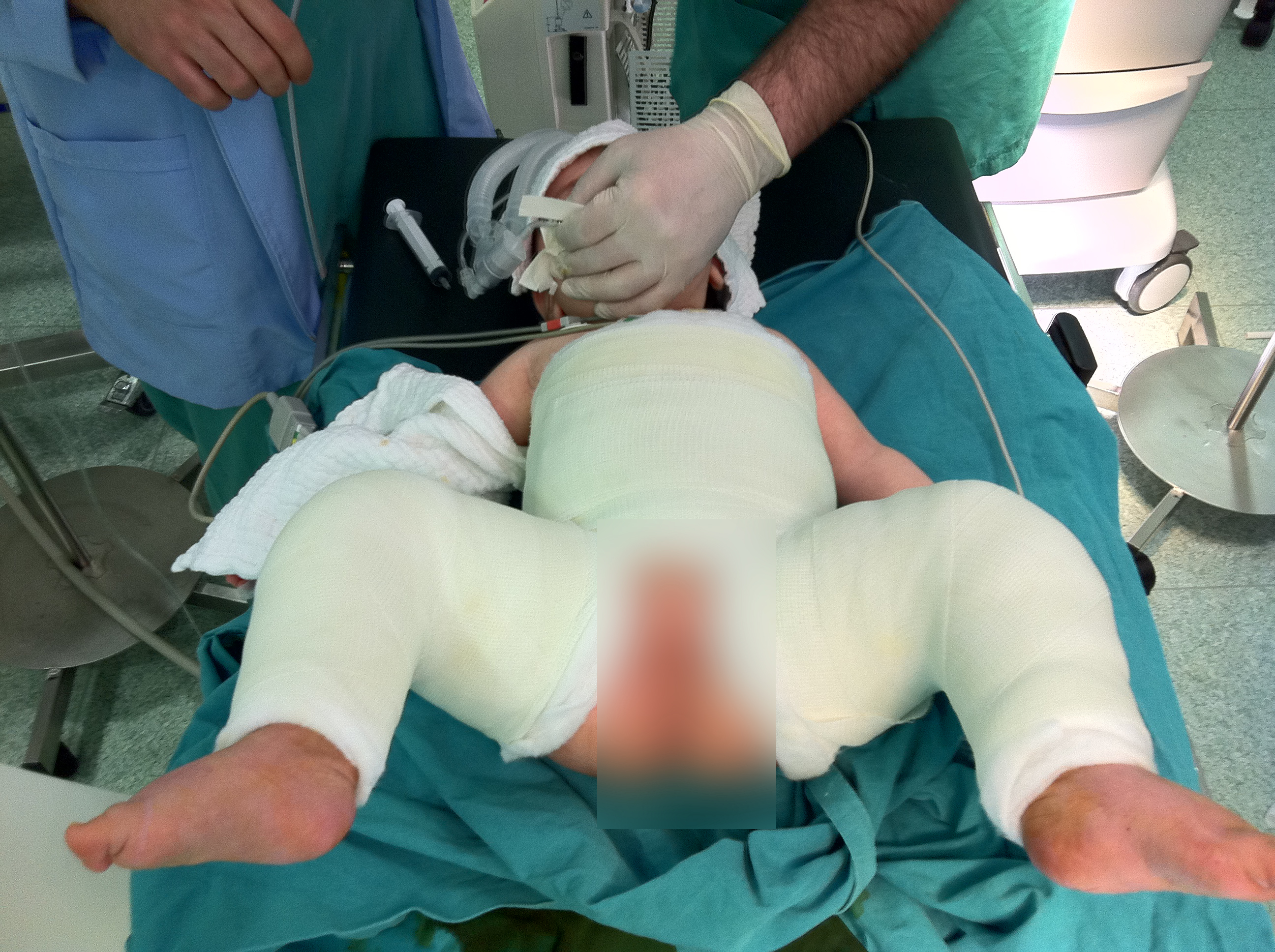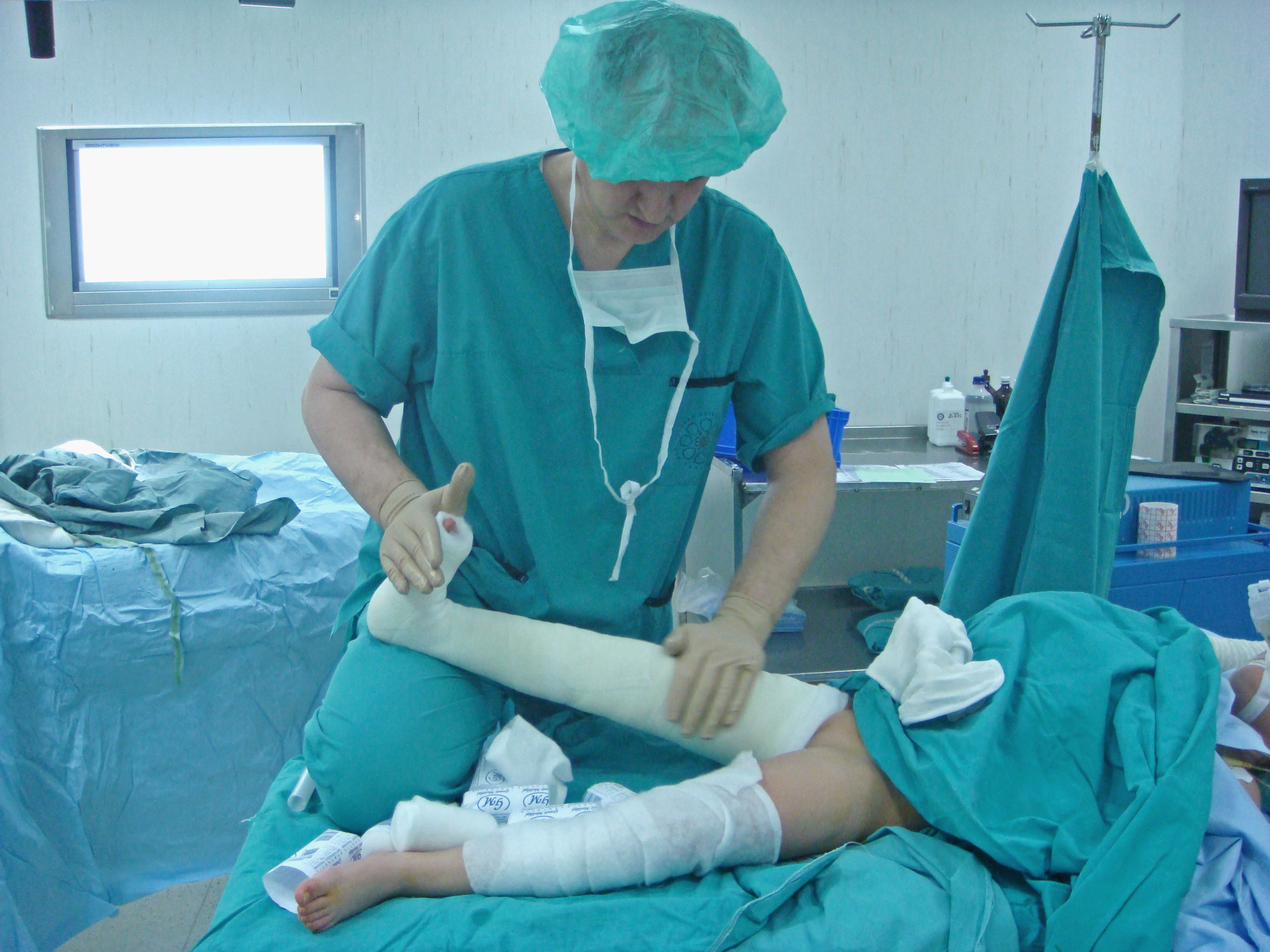“Inward feet” is possibly the most innocent, but also the frequent complaints that a child orthopedist gets from the parents. In medical terms, “inward feet” refer to the toe tip being inward oriented, rather than pointing forward. It is pretty common during infancy and early childhood. Comparing to it, “outward feet”, that is toe tip facing outside instead of forward, is a less common case. Both cases could be part of a normal physiological child development, but sometimes may indicate an orthopedic problem. Cases like this should be checked and diagnosed by an orthopedist or a pediatric orthopedist.
One of the most common cases faced during childhood is foot curvatures. Some could be congenital; some could build up later. “Talipes Equinovarus” is the main congenital foot curvature. It often requires an orthopedic treatment and a long-time monitoring. Another common congenital deformity is “Calcaneovalgus Foot”, when the foot and ankle excessively bent up, where the toes are usually touching the shin. Unlike “Talipes Equinovarus”, “Calcaneovalgus Foot”, is more innocent, easier to cure deformity. Treatment is almost always easy and trouble-free.
“X” and “O” shaped leg observation on the knee level is a common orthopedic problem faced during childhood. When “X” shape is observed, knees are too close to each other, even touch each other during walking from the inside parts. “O” leg is roughly the opposite, when knees seem to be diverging from each other, an “O” shape resembled from the front look. Both orthopedic cases can be observed in growing individuals. O" and "X" legs can be the part of a normal skeletal development, but also may indicate an orthopedic problem. Cases like this should be checked and diagnosed by an orthopedist.
It is medically possible to lengthen the bones in the body. These procedures, which can be performed surgically, are most frequently applied in the in the lower part of the body, on the thighs and the legs. “Lengthening of “Femur” and “Tibia” can be applied especially when one side is shorter than the other side. Lengthening application is called “İluzarov” procedure. Since the aesthetic lengthening initiative also means the use of height as a means of social acceptance, the patient, patient relatives and orthopedists should discuss and agree on the expectations and possible complications before undertaking such an operation.
“Curved tibia”, which occurs in infancy, is caused mostly in relation with the skeletal development. Therefore, it is a problem that starts during the growth period in the womb. In some cases, it can be mixed with foot curvatures, in addition to that, shortage of the bones can be observed together. Treatment changes according to the type of the curvature. For some cases, observation is enough, and curvature is fixed itself, but some cases require orthopedic surgery.
Different than grown-ups, children have special parts called growth cartilage (epiphyseal cartilage) or growth plate (epiphyseal plate) in their bones as they are in the growing phase. Fractures and injuries that affect growth cartilage, may naturally cause a risk for further growth. On the other hand, the fact that child bones are still growing and getting longer, gives them a big advantage during treatment. Fractures that are treated by casting, can most of the time be healed by possible angulations. (to be in acceptable limits)
It covers major congenital and later occurred orthopedic problems, fractures and other orthopedic injuries, bone, joint and other infections, treatment of height inequality and shortness, and neurology rooted orthopedic traumas such as Cerebral Palsy and Spina Bifida. Some pediatric orthopedists deal with spinal diseases such as scoliosis, others with bone and other orthopedic tumors during childhood.
Infancy is the most critical age group with a high probability of delay in diagnosis of Osteitis. They cannot express themselves verbally, and delays in their walking may not be noticed by parents as a cause, the symptoms of fever and rash may be mild. All these make the infants a risky group in Osteitis. In Osteitis, sometimes the family's reason for applying to a medical unit can be a very indirect reason such as the baby not eating enough, not being able to sleep or crying constantly. The simplest way to point osteitis by the parents is the baby’s inability to move the part of their body due to being very achy.
If Cerebral Palsy, which is a disorder in movement of muscle and joints cannot be treated by physiotherapy, devices etc., some medication can be used. “Botulinum Toxin” is the most common method being used to reduce the joint tension in Cerebral Palsy. The main purpose of orthopedic treatment approach in cerebral palsy is to highlight the methods that will prevent a surgical intervention that may be required at young ages. However, sometimes surgery may be necessary in a young child for various reasons.
Main purpose of the orthopedic operations is to fix the tension and deformities to improve the daily life quality and functions of the patient. For example, the most common operations for this purpose are performed for orthopedic problems such as walking on the toe, heel slipping in or out, crouching, knees inward or strains in the hip. These procedures mainly consist of muscle / tendon relaxation procedures, tendon transfers and bone operations.


Ülkemiz GKD'nin nispeten sık görüldüğü ülkelerdendir. Geleneksel olarak uzak doğu ve Afrika'da GKD çok na...
Read More

Doğumsal Kalça Çıkığının tedavisinde sorun çıkabilir mi, başarısızlık riski nedir? Tıbbi uygulamaların her türl&uum...
Read More

Üç aylık bir bebekte alfa açısı hala 60 derecenin altında ise ortopedik bir tedavi zorunlu olur. Küçük bir bebekte...
Read More

Gelişimsel Kalça Displazisinde ortopedik yaklaşımın ana amacı erken tanı koymak ve bu sayede basit ve yan etkileri sınırlı tedaviler ile sorunu...
Read More

Serebral Palsi'de uygulanan ortopedik girişimler nelerdir? Fizyoterapi, cihazlama ve benzeri yöntemlerle spastisite, yani eklem hare...
Read More

Bacak Eğrilikleri İçe Basma ,Dışa Basma X Bacak ,O Bacak Çocuklarının sağlığıyla ilgili olarak ailelerin en çok tedirgin olduk...
Read More

Ayak Sorunları Ayak Deformiteleri Çocukluk çağında karşılaşılan sık sorunlardan birisi ayak eğrilikleri ve sorunlarıdır. Bir kısmı...
Read More

Boy Eşitsizlikleri ve Boy Kısalıkları Tedavisi Bazen büyümeyi etkileyen hastalıklar veya yaralanmalar, bazen doğumsal bir neden...
Read More